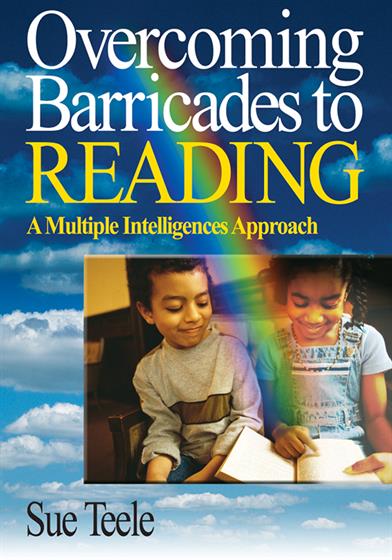Foreword
Preface
About the Author
1. Introduction
Introduction
Crystallizing and Paralyzing Experiences
Children's Developmental Progressions
2. The Theory of Multiple Intelligences - A Vehicle for Learning
The Theory of Multiple Intelligences
Linguistic Intelligence
Logical-Mathematical Intelligence
Spatial Intelligence
Musical Intelligence
Bodily-Kinesthetic Intelligence
Intrapersonal Intelligence
Interpersonal Intelligence
The Teele Inventory of Multiple Intelligences
3. The Relationship of the Brain to Teaching Reading
The Connections in the Brain Stem, the Limbic System and the Cerebral Cortex
Right and Left Hemispheres
Lobes of the Brain
Neural Branching and Pruning
The Relationship of the Brain to Reading
Three Brain Systems
How Children Acquire Language
4. The Process of Learning to Read
History of the English Language's Oral and Written System
Language and Learning
The Process of Learning to Read
Different Approaches for Teaching Reading
Systematic Phonics Approach
Literature-Based, Whole Language Approach
Studies About Different Reading Approaches
A Multi-faceted, Integrated Approach for Teaching Reading
Characteristics of a Multi-faceted Model for Teaching Reading
5. The Reading Process
How Children Learn to Read
Phonics, Phonemic Awareness and Phonological Awareness
Phonics
Phonemic Awareness
Ways to Teach Phonemic Awareness
Phonological Awareness
Alphebet Knowledge
Metalinguistic Awareness
Automaticity
Activities to Assist Beginning Readers in Relating Phonemic Awareness to Vocabulary Development
The Role of Spelling in the Reading Process
Sounds in Language
The Translation Process of Reading
6. Comprehension and Writing Skills
Oral Language
Teaching Students to Comprehend What They are Reading
An Overview of Comprehension Strategies, Approaches for Teaching These Strategies and Intelligences That Match Each Strategy
Text Structure
Teaching Students to Write
The Progression From Reading to Writing
7. Structural Techniques That Assist Students in Improving Decoding, Comprehension and Writing Skills
Venn Diagram
Timeline
Sequence of Events Chain
Clusters/Webs or Mapping
Synonym Web
Word Map
Semantic Word Map
Concept Map
Descriptive Map
Word Webs
Diagramming of Sentences
Concept Wheel or Circle
Sound Wheel
Storyboard
Story Pyramid
Pictorial Input
T-Chart
Graphic Organizer and Multiple Intelligences Chart
8. Strategies for Integrating the Theory of Multiple Intelligences Into Teaching Reading
The Relationship of Spatial Intelligence Into Teaching Reading
Integrating Musical Intelligence Into Teaching Reading
Activities That Utilize Bodily-Kinesthetic Intelligence to Teach Decoding and Vocabulary Skills
Teaching Reading to Logical-Mathematical Learners
Activities Using Multiple Intelligences to Assist in Developing Comprehension Skills
Rainbow Unit That Demonstrates Integration of Multiple Intelligences Into Teaching Reading, Writing and Comprehension Skills
Using Computer-Assisted Instruction to Support Teaching Reading Through Multiple Intelligences
The Role of Multiple Intelligences in Teaching Reading
9. Teaching Reading to English Language Learners
Teaching Reading to English Language Learners
Integration of Oral and Written Language for Both Native and English Language Learners
Differentiated Instruction for English Language Learners
The Developmental Process of Learning and Language
Case Study of an English Language Learner
Current Studies on Teaching Reading to English Language Learners
Strategies for Teaching English Language Learners to Read
10. Conclusions
Concluding Remarks
Re-Direction for Teaching Reading
References



